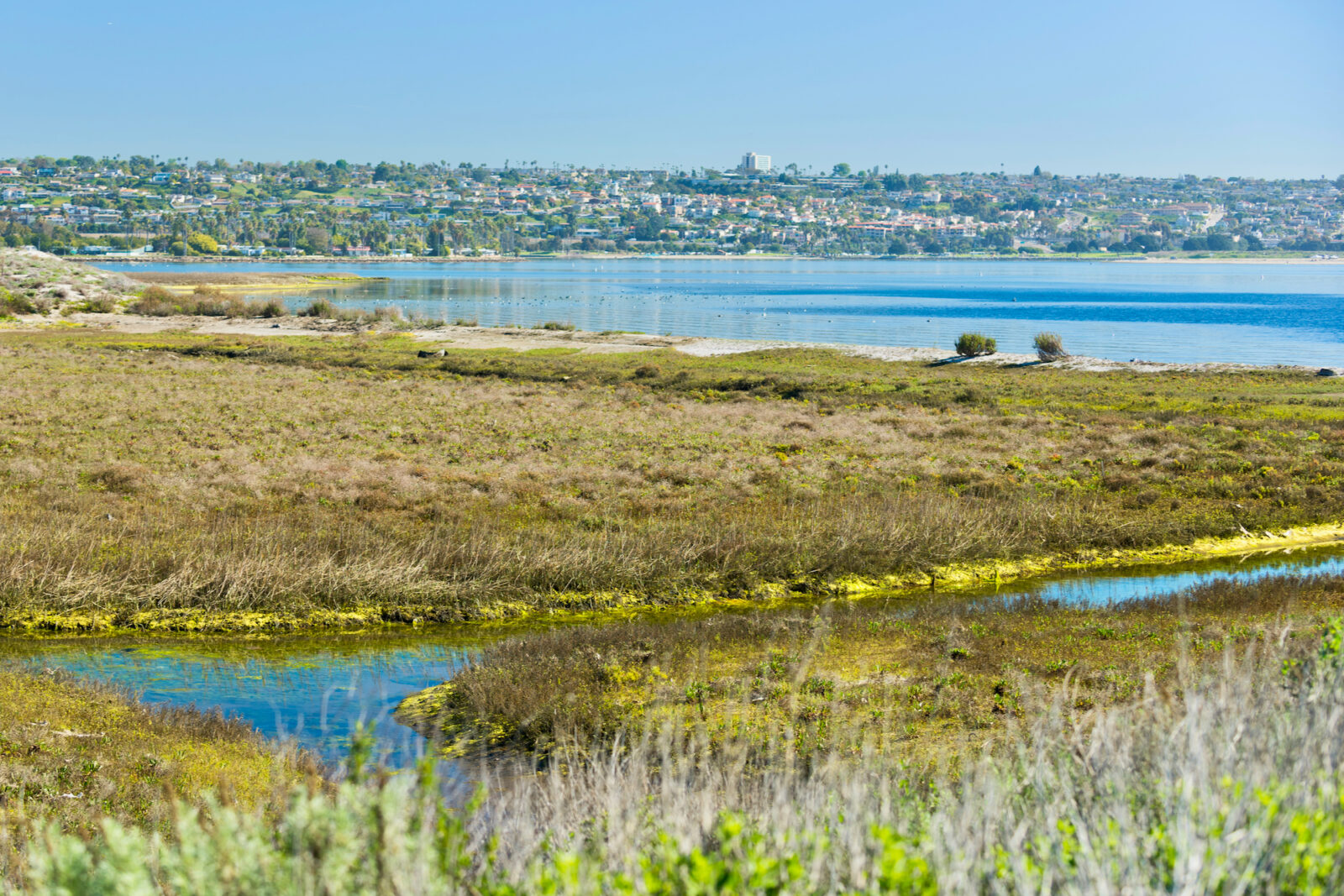It was a busy spring at ReWild Mission Bay as we repeatedly asked you, our advocates and supporters and ReWild Coalition members, to make comments via e-mail, city websites, and remarks at public meetings about the DPEIR, or draft programmatic EIR (Environmental Impact Report), for the city’s De Anza Natural wetland restoration proposal.
Aside from the fact De Anza Natural sounds like the name of a less-than-optimal light beer, we have our issues with the city’s proposal, and made those concerns clear as part of our ReWild Mission Bay Coalition comment letter on the EIR.
While we indicated we’re pleased the city is moving toward wetland restoration in the northeast corner of Mission Bay, we’re concerned the restoration proposal will fail unless the city requires the same volume of wetland acreage we originally called for as part of the Wildest proposal. Otherwise, it appears the project’s ecological success and restoration goals will be minimized at best – and that’s bad news for wetland habitats as well as city assets when sea levels reach their forecasted height in the years to come.
But it isn’t just us, or you. Three of the most interesting comment letters to the city on the De Anza Natural plan came from the California Department of Fish and Wildlife (CDFW), U.S. Fish and Wildlife Service (USFWS), and the San Diego Regional Water Quality Control Board (RWQCB), whose unanimous approval of the Supplemental Environmental Project (SEP) fund in 2020 enabled funding for the city’s De Anza Natural plan and resultant EIR in the first place.
While these letters have yet to be made public, we have copies of them. Comments from these three agencies reveal some additional concerns that either amplified our own concerns about the De Anza proposal, or those brought to our attention by the local office of Environmental Science Associates (ESA), whom we hired to help us review the city’s draft EIR
The comment letter from the California Department of Fish and Wildlife noted several items:
- The city needs more aggressive planning for projected sea level rise. This is a point ReWild has been making for years. According to the CDFW comment letter, “The DPEIR does not sufficiently incorporate climate resiliency into the Project design or include an analysis of how sea level rise will affect the proposed wetland habitat.”
- CDFW also agrees that the city’s draft EIR doesn’t satisfy the requirements initially put forward as part of the 2020 SEP funding. “The Wetlands Optimized Alternative in the DPEIR does not demonstrate that 80 acres of wetland will remain after sea level rise in the year 2100.”
- Most notably, the state agency emphasizes ReWild’s Wildest plan is still the best option. “Additionally, to meet the SEP requirement,” and to “maximize implementable wetland restoration reflective of existing feasibility studies for Mission Bay, the alternative [i.e., the city’s proposal] should incorporate feasible design elements that were studied as a component of Audubon’s ReWild Mission Bay.”
Similarly, the San Diego Regional Water Quality Control Board noted several items of interest in their remarks:
- Again, they note the city needs to do a better job planning for sea level rise, and that the SEP funding that enabled the De Anza Natural proposal requiressea level rise to be factored in. “The current DPEIR fails to demonstrate whether and/or how the expanded restoration alternative results in the establishment of 80 acres of additional functional wetlands at the year 2100.”
- The RWQCB also agrees with our emphasis on water quality improvement. “Provide a hydrologic evaluation of whether a reduction and/or relocation of the [De Anza] island could help improve circulation and access to water for all the areas.”
- The agency also wants to know how the “island,” which would be created out the southern end of the De Anza “boot” will be used. “Provide an evaluation of whether the southern island can be used in the future for managed retreat to provide additional wetlands.”
- And the RWQCB agrees the northeast corner of the bay at the mouth of Rose Creek, from De Anza Cove west to the current Kendall-Frost Marsh, is still the best, most productive area for prioritizing wetland restoration in Mission Bay. “In balancing the recreational needs, the San Diego Water Board supports maximizing wetland creation opportunities on a scale that includes the entirety of Mission Bay Park.”
The comment letter from the U.S. Fish and Wildlife Service also pointed out several conflicts within the city’s De Anza Natural EIR filings, and as we’ve been asking our advocates to do this year, similarly noted the critical need for maximum wetland restoration. Thank you for your hard work and advocacy on making this critical concern heard.
Once we receive the green light to make the referenced comment letters from these agencies public, we’ll link the PDFs to this post.
And again, if you missed the ReWild Coalition comment letter on the city’s draft EIR for the De Anza Natural plan, you can find it here.
Kendall-Frost Marsh Reserve photo © 2020 Greg Hoxsie, all rights reserved. Not intended for republication.

